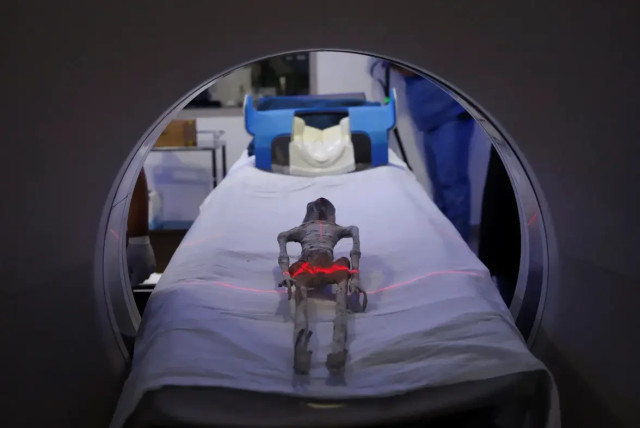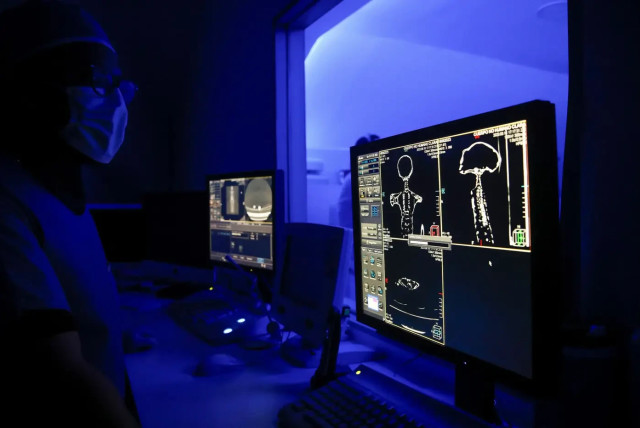Peruvian 'alien mummies' confirmed to be inhuman

Researchers confirm Mexican alien mummies are not human, but refrain from declaring them extraterrestrial. Are they wary of potential consequences?
Two months have passed since the unprecedented display of "inhuman" bodies, claimed to be extraterrestrials, were presented in glass cases to Mexican politicians in Mexico City's Congress.
Recently, another hearing was held by Mexico's Congress, where researchers testified to the authenticity of the Peruvian mummies with three fingers, suggesting they could be evidence of non-human life forms.
However, they hesitated to confirm whether these remains were indeed from aliens.
Does their reluctance stem from concerns over the potential consequences?
During the congressional hearing on unidentified anomalous phenomena, journalist and UFO expert Jaime Mausen unveiled two alleged "alien bodies" - fossilized remains said to be 1,000 years old. Speaking under oath at the Palace of the Legislators in San Lazaro, Mausen declared that "these specimens do not belong to our terrestrial evolution. They were not creatures discovered after a UFO crash. Instead, they were found in diatom mines and later transformed into fossilized mummies."
Mausen informed Congress that DNA testing showed over 30% of the samples had unknown characteristics not found in any known species. The research indicated that the mummies were made up of a single skeleton and not human in nature.
Furthermore, Mexican researchers confirmed that the Peruvian mummies with three toes were authentic during the three-hour presentation to Congress, featuring several doctors testifying to the existence of these previously living entities.
It is important to note that Mausen has a reputation of being a charlatan, and in 2017 made similar claims in Peru. Nevertheless, a report by the Peruvian prosecutor's office revealed that the Dezig bodies were, in fact, "recently produced dolls covered with a mixture of paper and synthetic glue to simulate skin."
The report emphasized that these figures were almost certainly man-made and "not remains of aliens." As the bodies were not publicly displayed at that time, it remains unclear if they are the same ones presented in Mexico City's Congress.
However, this time, renowned researchers have conducted tests supporting Mausen's claims, indicating that the mummies are genuine creatures, although they refrain from labeling them as aliens.
The second hearing, held after the initial one on September 13, received global criticism, leading to Mausen and several Mexican lawmakers being ridiculed worldwide for asserting that the mummies from Peru were creatures unrelated to human evolution.
This time, Mausen provided a group of doctors who confirmed the biological existence of the mummies and posited their extraterrestrial origin. While none of the scientists explicitly claimed the results proved the beings to be extraterrestrials, Mausen stood by his assertion. Witnesses described the creatures as a "new breed" of "non-human" without lungs or ribs.
Mausen added that they had lightweight yet sturdy bones, were toothless, and contained implants made of cadmium and osmium – two of the rarest elements on Earth.
"This is the first time extraterrestrial life has been presented in this manner, concluded Mausen. "We have a clear example of non-human specimens unrelated to any known species on our planet. The public has the right to know about non-human technology and beings. This reality unites humanity rather than dividing us. We are not alone in this vast universe; we should embrace this truth."
According to The New York Post, Mausen's team also claimed that one of the mummies "was intact and alive. It was biologically active and pregnant," pointing to large bulges in the apparent abdomen of the extraterrestrial, suggesting the possibility of eggs.
Anthropologist Roger Zuniga from the National University of San Luis Gonzaga in Ica, Peru, stated, "These beings are real. No human intervention was involved in their physical and biological formation."
A letter signed by 11 researchers from the university confirmed the authenticity of the mummies, but they refrained from confirming their extraterrestrial origins. It is suspected that the mummies were discovered in a mine in Cusco, Peru, in 2017.
Mausen's first presentation in September was criticized by a host of experts who claimed that it was a hoax that had been debunked by scientists years ago. They also claimed that the mummies were "created from the remains of human mummies". Mausen came out against this assertion and claimed that the researchers have no way of knowing that these are human remains because they did not examine the bodies and that this may be another way for the government to prevent public chaos. In the last hearing, he proved (according to him) that he was right that the determination was too quick.
Mexican politician Sergio Gutierrez Luna added that "all ideas and all proposals are always welcome for discussion. You have to hear them and then agree with them or not." Gutiérrez, who is part of the ruling party of President Andrés Manuel López Obrador, called for a reform of Mexico's law to make it possible to publish all information about UFOs.
Many expressed skepticism about the discovery and the tests and called them a "scam". They mentioned that such similar findings in the past turned out to be the remains of mummified children - including the findings presented by Mausen himself in the past. The government of Peru, where the mummies were found, claimed that the remains were simply artifacts from the pre-Hispanic era.
Peruvian Culture Minister Leslie Ortiaga said no scientific institution in the country had identified the remains as non-human and wondered how the samples were removed from Peru.
Jerusalem Post Store
`; document.getElementById("linkPremium").innerHTML = cont; var divWithLink = document.getElementById("premium-link"); if (divWithLink !== null && divWithLink !== 'undefined') { divWithLink.style.border = "solid 1px #cb0f3e"; divWithLink.style.textAlign = "center"; divWithLink.style.marginBottom = "15px"; divWithLink.style.marginTop = "15px"; divWithLink.style.width = "100%"; divWithLink.style.backgroundColor = "#122952"; divWithLink.style.color = "#ffffff"; divWithLink.style.lineHeight = "1.5"; } } (function (v, i) { });



